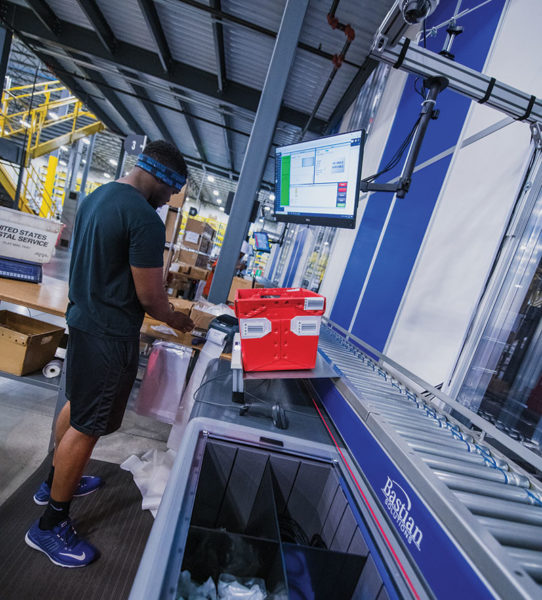Forget the global supply chain snarls for a moment and consider another changing reality with inventory: the increasingly intricate flow of goods and inventory transactions involved inside today’s fulfillment centers.
While warehouse management system (WMS) software solutions have long been responsible for inventory control in DCs, the complexity of inventory flows and inventory visibility in a modern fulfillment center is a far cry from mainly manual DCs of the not too distant past, where one forward picking zone often served the whole operation.
Today, by contrast, fulfillment centers might have multiple zones of automation with subsystems like automated storage and retrieval (AS/RS) solutions or robotic goods-to-person (GTP) systems that may have software that manages some aspects of inventory, along with storage and bin location functions.
Getting these subsystems to interoperate smoothly with WMS when it comes to real-time inventory allocation as part of order release, as well as timely replenishment of SKUs needing by multiple picking systems, is changing the functional needs in the WMS market. Metering the flow of goods around order release is also part of the value proposition for warehouse execution system (WES) software, a category of software that sits between the automation and WMS, and is offered by a mix of vendors, including some WMS providers.
Dan Gilmore, chief marketing officer with Softeon, a WMS and WES software provider
“In today’s distribution, it’s all about product flow. And certainly, there is a segment of the market where DCs are growing larger and more complex. In these environments, that means there’s more and more processes and systems that need to be synchronized. And, if you can’t do that well, you wind up with bottlenecks.”
The core inventory management features in WMS remain relevant, however. WMS solutions still use bar code data capture to verify inventory consumption or moves, and functions like cycle counting and tracking minimum SKU levels as part of managing replenishment of forward pick locations, remain WMS table stakes. But when it comes to metering the flow of inventory to automation as part of a nimbler approach to order release, things are changing.
Inventory flow and WES
A primary use for WES is managing order release to processes and systems on the floor in a way that creates a level flow of work that makes the most of the robotics and machinery. The WES market has multiple players, including integrators with WES and WMS vendors that have built up WES capabilities. Major warehouse automation vendors also offer software at the WES and WMS levels.
In most cases, the WMS remains the system of record for most inventory data, but WES functionality is increasingly being deployed for smart order release, with real-time monitoring of inventory levels as part of that. The beauty of WES, says Gilmore, is that it…(READ MORE ON LOGISTICSMNGMT.COM)

